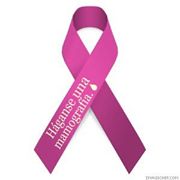
www.facebook.com /MovimientoRosa
When it comes to our health, paying attention to changes is of great importance. The body always shows warning signs and listening to them could make the difference in the early diagnosis of a disease.
Secretions and bleeding from the nipple, skin with an orange peel appearance, shrinkage or collapse of the nipple, tightening, holes, wrinkles and pinches in the skin, a new vein, asymmetry between the two breasts, masses, erosions and dark red coloration, are the main warning signs of breast cancer. That’s why a periodic medical checkup is crucial.
Oncologist Zuricka Samuels suggests that the presence of any of these symptoms calls for a visit the doctor and that it’s essential to conduct relevant studies according to the patient’s age, such as a mammogram or ultrasound, to obtain an accurate diagnosis and a suitable treatment.
Early detection is crucial to heal the patient. Cancer has four stages. In stage 1, 98% of women survive. In stage 4 many patients lose the battle,”
said Samuels.
With breast masses a better examination is necessary, depending on the patient’s age, since in adolescents the chances of a benign mass are bigger.
Risk factors for breast cancer are divided into three groups: hormonal, heredity and environmental.
The group of hormonal factors include early menstruation and late menopause, as this allows a longer period of exposure to the body’s own estrogen.
Also, to have children after age 35 or not breastfeeding increases the risk, because breastfeeding helps breast to fully develop.
The primary objective of the breast is to produce milk, so a woman who never nurses doesn’t complete that part of the developing,”
says Dr. Samuels.
Hormone replacement therapy in menopausal women also increases the risk, albeit in a mild way.
The oncologist explained that the inherited risk factor comprised the second group and it’s affecting those with relatives of first and second line (mother, siblings and grandmother) who had the disease.
There are two types of cancer. Sporadic, which is what can come out of nowhere, which represent 70% of cases; and hereditary, which represent approximately 10% to 15% of cases,”
said the specialist.
Environmental factors comprise the third group and people can have a little more control over them, by taking into account their activities. Radiation exposure is included in this group. For example, women who had to receive radiation for tumors when they were children, have a higher risk of cancer.
Chemicals, to which we are exposed, such as medical devices for sterilization, chemical fumigants or some deodorants with specific components, are also part of the environmental factors.
Also, the habits of each person are determinant, so aspects such as sedentary lifestyle, excessive consumption of products such as unsaturated fats, alcohol and tobacco, and stress increase the risk of breast cancer.
Stress is one of the predominant factors in the diagnosis of not only breast cancer but also other types, because it decreases immunity and increases the probabilities of the disease in a patient that is already predisposed.”
concluded Samuels.